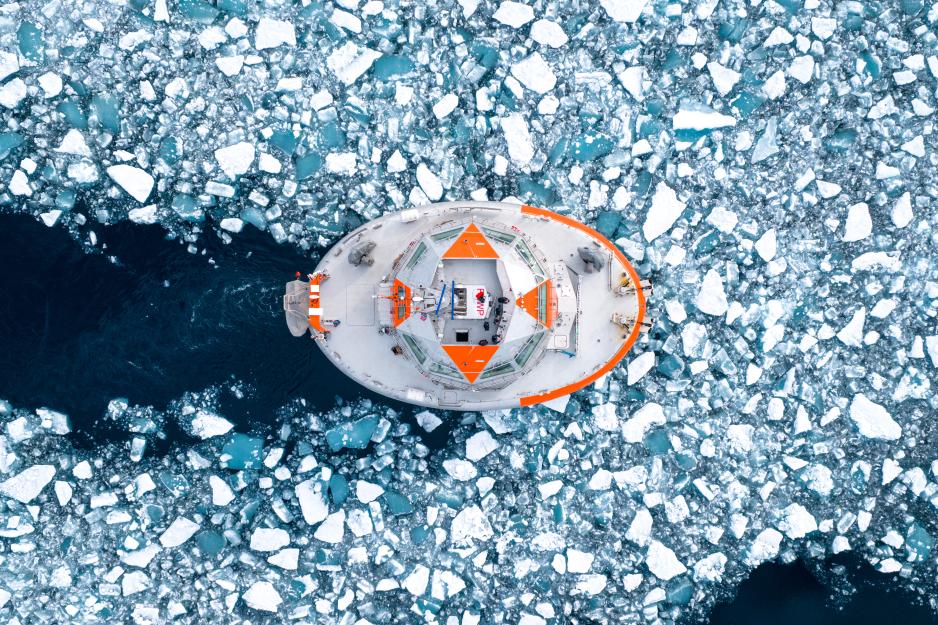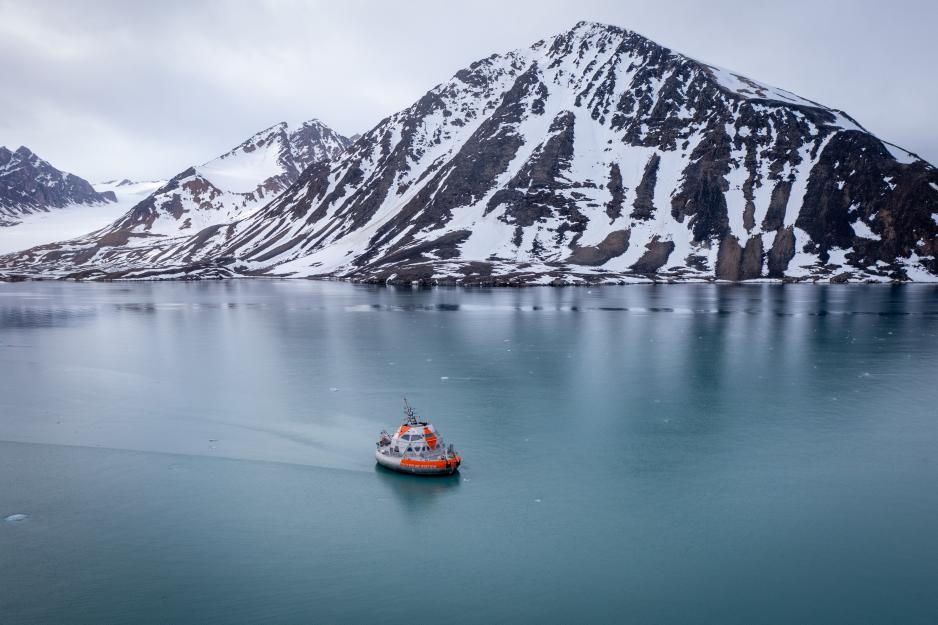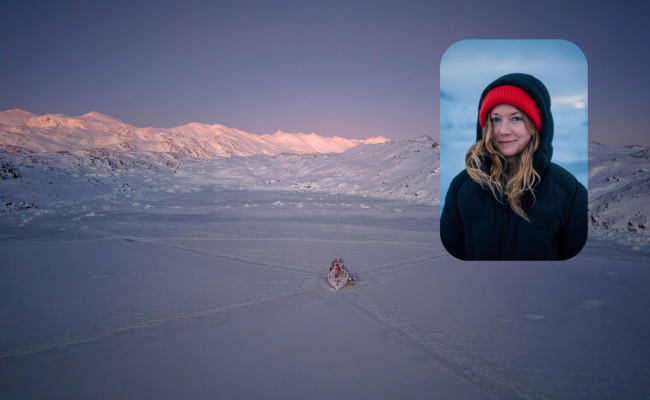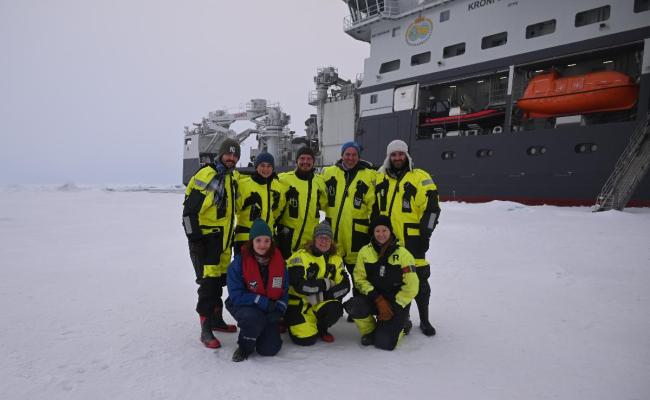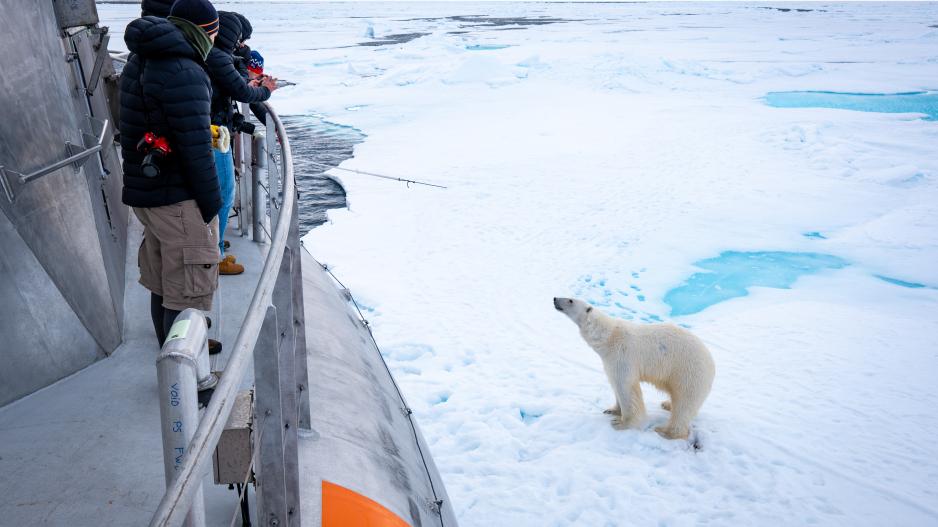
While drifting in the Arctic Ocean, the crew encountered several curious polar bears. (Photo: Maéva Bardy - Fondation Tara Ocean)
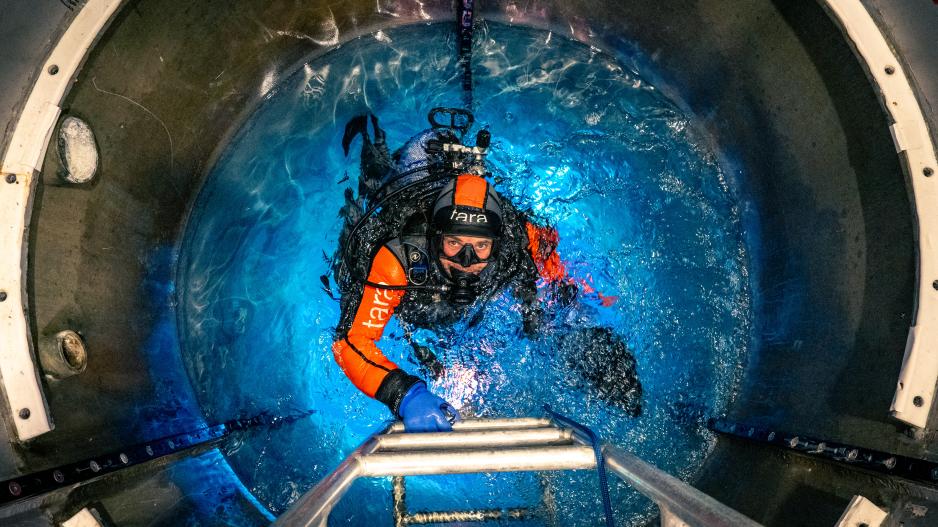
A diver uses the moon pool in the Tara Polar Station. The moon pool is 1,6 meters in diameter, designed to allow sampling of polar waters down to depths exceeding 2,500 meters. (Photo: Maéva Bardy - Fondation Tara Ocean)
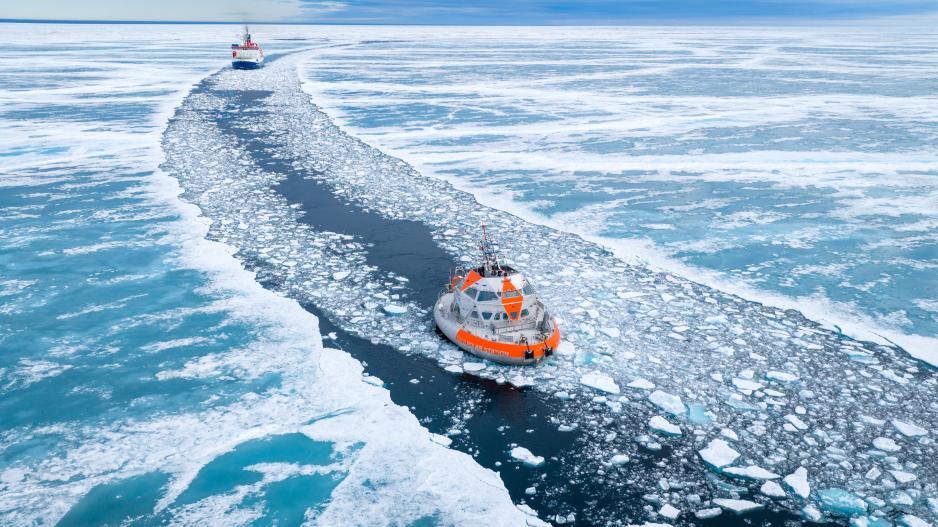
The research vessel Polarstern led the way in the Arctic Ocean. (Photo: Maéva Bardy - Fondation Tara Ocean)
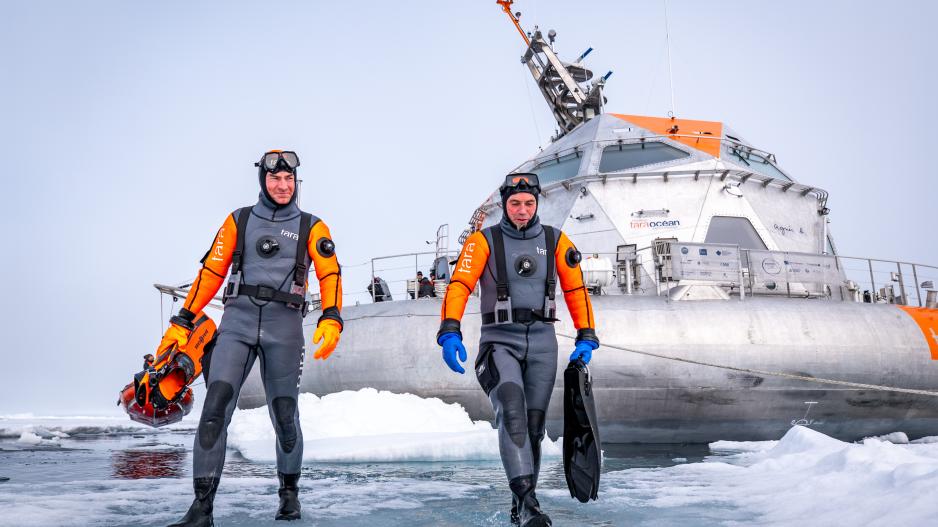
Two divers outside the Tara Polar Station during its test campaign this summer. (Photo: Maéva Bardy - Fondation Tara Ocean)

